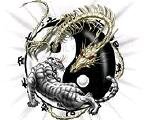Plovdiv (Bulgarian: Пловдив) is the second-largest city in Bulgaria after Sofia, with a population of 341,873([1]). It is the administrative centre of Plovdiv Province in southern Bulgaria, as well as the largest and most important city of the historical region of Upper (or Northern) Thrace, famous for its ancient and diverse culture and millennial history.
Plovdiv
Official seal of Plovdiv
Seal
Position of Plovdiv in Bulgaria
Position of Plovdiv in Bulgaria
Coordinates: 42°9′N 24°45′E / 42.15, 24.75
Country Bulgaria
Province Plovdiv
Government
- Mayor Ivan Chomakov
Area
- City 101 km² (39 sq mi)
- Land 101 km² (39 sq mi)
- Water 0 km² (0 sq mi)
Elevation 164 m (538 ft)
Population (31.12.2005)
- City 341,873
- Density 3,352/km² (8,681.6/sq mi)
Time zone EET (UTC+2)
- Summer (DST) EEST (UTC+3)
Contents
[hide]
* 1 Geography and name
* 2 Climate
* 3 History
* 4 Culture
o 4.1 Museums and protected sites
o 4.2 Churches, mosques and temples
o 4.3 Theatre
o 4.4 Music
o 4.5 Literature
* 5 City government
* 6 Economy
* 7 Shopping
* 8 Transport
* 9 Sights
* 10 Sports
* 11 Notable citizens
* 12 Twinning
* 13 Universities
* 14 Trivia
* 15 See also
* 16 External links
* 17 References
[edit] Geography and name
A view over Plovdiv
A view over Plovdiv
Plovdiv is located on the banks of the Maritsa river in the central part of Upper Thrace. The surrounding countryside is sparsely populated and bare, yet the city itself is particularly striking, since it, like Rome, is nestled in between seven hills. Tourists, however, are likely to count only six of those, as one of hills was virtually destroyed at the beginning of the 1900s, and there is only a small outcrop of rock left to show where it once stood.
During its long history, Plovdiv was inhabited by many peoples who gave it different names: in Thracian: Eumolpias, Pulpudeva; Greek: Φιλιππούπολη, Φιλιππούπολις / Philippoupoli, Philippoupolis; Turkish: Filibe. In the Middle Ages the Bulgarians called the city Пълдин or Плъвдив. The city was usually known as Philippopolis in English until the early 20th century.
[edit] Climate
Summers are often extremely hot and dry, whilst winters are generally mild, but can sometimes be extremely cold. The wettest month is June with an average precipitation of 65mm, whilst the driest is August with an average of 27mm. The average July daytime temperature is 36c, whilst the January daytime average is 5c. The hottest temperature ever recorded is 46.7c and the coldest is -31.5c.
[edit] History
Plovdiv is one of the oldest cities in Europe. It is a contemporary of Troy and Mycenae, and older than Rome, Athens, Carthage or Constantinople. Archaeologists have discovered fine pottery[2] and other objects of everyday life from as early as the Neolithic Age, showing that in the end of the 7th millennium B.C there already was an established settlement there. According to Ammianus Marcellinus, Plovdiv's written post-Bronze Age history lists it as a Thracian fortified settlement named Eumolpias. In 342 BC, it was conquered by Philip II of Macedon, the father of Alexander the Great, who renamed it "Φιλιππόπολις", Philippopolis or "the city of Philip" in his own honour. Later, it again became independent under the Thracians, until its incorporation into the Roman Empire, where it was called Trimontium (City of Three Hills) and served as metropolis (capital) of the province of Thrace. Thrimontium was an important crossroad for the Roman Empire and was called "The largest and most beautiful of all cities" by Lucian. In those times, the Via Militaris (or Via Diagonalis), the most important military road in the Balkans, passed through the city.[1] The Roman times were a glorious period of growth and cultural excellence. The ancient ruins tell a story of a vibrant, growing city with numerous public buildings, shrines, baths, and theatres. Many of those are still preserved and can be seen by the curious tourist wishing to experience the charm of ancient Rome up close.
Bulgarian National Revival house in Plovdiv's old town part
Bulgarian National Revival house in Plovdiv's old town part
The Slavs had fully settled in the area by the middle of the 6th century, but the region only became a province in Bulgaria in or about 815. It remained in Bulgarian hands until conquered by the Byzantine Empire in 970 or 971. Byzantine rule was succeeded by that of the Latin Empire in 1204, and there were two short interregnum periods as the city was twice occupied by Kaloyan of Bulgaria before his death in 1207. Under Latin rule, Plovdiv was the capital of the Duchy of Philippopolis governed by Renier de Trit, and later on by Gerard de Strem. Bulgarian rule was reestablished during the reign of Ivan Asen II between 1225 and 1229. In 1263 Plovdiv was conquered by the restored Byzantine Empire and remained in Byzantine hands until it was re-conquered by George Terter II of Bulgaria in 1322. Byzantine rule was restored once again in 1323, but in 1344 the city was surrendered to Bulgaria by the regency for John V Palaiologos as the price for Ivan Alexander of Bulgaria's support in the Byzantine civil war. When Bulgaria was defeated by the Ottoman Empire in 1369, Plovdiv survived as one of the major cultural centers for Bulgarian culture and tradition. The name Plovdiv first appeared around that time and is derived from the city's Thracian name Pulpudeva (assumed to be a translation of Philippopolis, from Pulpu = Philippou and deva = city), which was rendered by the Slavs first as Pəldin (Пълдин) or Pləvdin.
Under the rule of the Ottoman Empire, Plovdiv (then known as Filibe) was a focal point for the Bulgarian national movement in the Eastern Rumelia province of the Empire. The city was liberated from the Ottomans during the Battle of Plovdiv in 1878 and, after the Congress of Berlin separated the autonomous region of Eastern Rumelia from Bulgaria, Plovdiv became its capital. At the time, it had a population of about 33,500, of which 45% were Bulgarians, 25% Greeks, 21% Turks, 6% Jews and 3% Armenians, a situation that changed rapidly in the following decades. A few years later, in 1885, Eastern Rumelia was absorbed into modern Bulgaria as part of the Bulgarian unification project.
During the period of communist governance that followed the end of World War II, Plovdiv became the birthplace of Bulgaria's movement for democratic reform, which by 1989 had garnered enough support to enter government.
Plovdiv has hosted specialized exhibitions of the World's Fair three times, in 1981, 1985, and 1991.
[edit] Culture
Plovdiv's main street, Knyaz Alexander I
Plovdiv's main street, Knyaz Alexander I
[edit] Museums and protected sites
Plovdiv has more than 200 known archaeological sites, 30 of which are of national importance. Some of the most famous sites include the Roman theatre (early 2nd century AD) and Stadium (late 2nd century AD), the magnificent colored mosaics of the villas, the ones of the episcopal temple, the Nebet Tepe archaeological complex and the noted samples of Bulgarian National Revival architecture, such as the Balabanov House, the Kuyumdzhiev House, the Lamartine House, and the houses of Georgiadi, Nedkovich, and Hindian.
Also of note is that there are more than 30,000 cultural artifacts, kept in the five Plovdiv museums: the Archaeological Museum, the Ethnographic Museum, the Historical Museum, the Natural Museum and the City Art Gallery. The Panagyurishte Golden Treasure from the end of the 6th century BCE consists of six uniquely decorated golden utensils, together weighing more than 6,000 kg.
The Old Town of Plovdiv is a historic preservation site known for its unique Bulgarian Renaissance architectural style. The Old Town covers the area of the three central hills (Трихълмие, Trihalmie) —Nebet Tepe, Dzhambaz Tepe and Taxim Tepe. Almost every house in the Old Town is characteristically impressive in its exterior and interior decoration.
The Bulgarian Museum of Aviation is located on the western edge of Plovdiv International Airport.
[edit] Churches, mosques and temples
There are a number of 19th century churches, most of which follow the distinctive Eastern Orthodox construction style. Those are the Saint Constantine and Saint Helena, the Saint Marina, the Saint Nedelya, the Saint Petka and the Holy Mother of God Churches. There are also the Roman Catholic Cathedrals in Plovdiv, the largest of them being St Ludovic. There are several more modern Baptist, Methodist, Presbyterian, and other Protestant churches, as well as older style Apostolic churches. Two mosques remain in Plovdiv from the time of the Ottoman rule. There is also one synagogue.
[edit] Theatre
The existing infrastructure of the city adds to the development of cultural activities. The Plovdiv Drama Theatre is an inheritor of the first professional theatre group in Bulgaria founded in 1881. The Plovdiv Puppet Theatre, founded in 1948, remains one of the leading institutions in this genre. Established in 1953, Plovdiv Opera achieves serious professional acknowledgments not only in Bulgaria, but also in Germany, Denmark, Spain and Italy.
[edit] Music
Another post of the culture of Plovdiv is the Philharmonic, founded in 1945. Works of the classic and of the modern symphony are included in its repertory. Soloists such as Dmitri Shostakovich, Sviatoslav Richter, Mstislav Rostropovich, Yuri Boukov and Mincho Minchev worked with the Plovdiv Philharmonic. The orchestra toured in almost all of the European countries. Known for its originality and professionalism is the Trakiya Folklore Ensemble. Founded in 1974, it has performed thousands of concerts in Bulgaria and more than 40 countries of the world. The Trakiya Traditional Choir was nominated for a Grammy Award.
[edit] Literature
The city's traditions as a literary centre are preserved by the first public library in Bulgaria, the Ivan Vazov National Library, by the 19 chitalishta (cultural centres) and by numerous booksellers and publishers. Today the Ivan Vazov National Library is the second largest national library institution, owning rare Bulgarian and European publications. The modern publishing houses add their significant contribution to the book market in the country and represent Bulgarian literature abroad. Plovdiv is also home of the famous Katerina Stavreva.
[edit] City government
The territory of Plovdiv Municipality is subdivided into six district administrations, their respective mayors being appointed following approval by the Municipal Council. The Mayor of the Municipality of Plovdiv Ivan Chomakov [3], together with the six district mayors represent the local executive authorities. The Municipal Council which consists of 51 municipal counselors, represents the legislative power and is elected according to the proportional system by parties’ lists.[2]
The executive government of the Municipality of Plovdiv consists of a mayor who is elected by majority representation, five deputy mayors and one administrative secretary. All the deputy mayors and the secretary control their respective administrative structured units. The district administrations are, as follows:
* Central District
* Eastern District
* Western District
* Northern District
* Southern District
* District of Trakia
[edit] Economy
A street in the historic old town
A street in the historic old town
Plovdiv is the centre of the important Thracian agricultural region, and food processing is among the most important industries. The city also produces machinery, textiles, and chemicals. After the fall of Communism in 1989 and the collapse of Bulgaria's planned economy, a number of industrial complexes were closed. Industry has been expanding again since the late 1990s, with numerous modern manufacturing plants built in the city or in its outskirts. In this period, some €500,000,000 has been invested in plant construction. Some of the biggest new plants are the Liebherr refrigerator plant with 1,850 employees and a capacity of 450,000 items per year, the Socotab tobacco processing plant (2,000 employees), a bicycle plant (500 workers, capacity 500,000 units), a biodiesel plant, the Bulsaphil textile plant (790 workers), and several electronics and high-tech plants producing CD players and other electronic equipment.
The Plovdiv International Fair, held annually since 1892, is the largest and oldest fair in the country and all of southeastern Europe, gathering companies from all over the world in an exhibition area of 95,000 m².
[edit] Shopping
Several huge hypermarkets have been built in recent years: Metro, Kaufland, Sany, Praktiker, Billa, Mr. Bricolage and others. Many more are planned or under construction, including two large malls. The main shopping area is the central street with its numerous shops, cafes and restaurants. There are several shopping malls and trade centres.
[edit] Transport
Two key highways run into or near Plovdiv, the Sofia-Edirne-Istanbul and the Sofia-Stara Zagora-Burgas routes. A major tourist center, Plovdiv lies at the foot of the Rhodope Mountains, and most people wishing to explore the mountains choose it as their trip's starting point. There are three train stations and three bus terminals.
Plovdiv has an extensive and well-developed public transport system, including buses and trolleys. Some of the lines reach several villages in the vicinity of the city. The regular bus and trolley fare is 60 Stotinki (0.60 BGN) per ride, while the cab car-pools fare is 70 stotinki (0.70 BGN). Cab car-pooling is faster, but less comfortable, as the cabs stop to load/unload at any location. Plovdiv is a major road and railway hub in southern Bulgaria: the Trakiya motorway is only 5 km to the north, while first-class roads lead to Sofia, Karlovo, Asenovgrad, Stara Zagora and Haskovo. There are railways to Sofia, Panagyurishte, Karlovo, Stara Zagora, and Asenovgrad.
The Plovdiv International Airport is located near the suburb village of Krumovo, southeast of the city. There are plans for its modernisation and expansion. It currently takes charter flights from several European countries.
[edit] Sights
The Roman Stadium
The Roman Stadium
The Roman Theatre
The Roman Theatre
* The Old Town
* Eirene mosaic
* Ancient synagogue
* St. Constantine and Helena Church
* Sahat Tepe hill and clock tower
* Nebet Tepe hill complex
* Dzhumaya Mosque
* Imaret Mosque
* Old Turkish Bath (now an art gallery)
* Virgin Mary Church
* St Petka Church
* St Marina Church
* St Ludovic Roman Catholic Cathedral
* Gothic Evangelist Church
* Tsar Simeon's Garden and The Singing Fountains
* The main street
* Plovdiv International Fair
* The Rowing Canal (sports and recreation park)
[edit] Sports
Plovdiv Sports Complex in autumn
Plovdiv Sports Complex in autumn
Football is the most popular sport in the city. Plovdiv is famous for its football teams. Botev Plovdiv was founded in 1912, and is named after one of the most ardent Bulgarian poets and revolutionaries, Hristo Botev. The city has another popular football club, Lokomotiv, founded in 1936. They played in the UEFA Cup 2005-06, being eliminated in the first round by Bolton Wanderers. Both teams are a regular fixture in the top Bulgarian league, and are famous for their productive youth academies. The rivalry between them is considered to be even more fierce than the one between Levski and CSKA of Sofia. There are also two other football clubs in the city – Maritsa FC and Spartak Plovdiv.
The "Plovdiv Sports Complex" is unique and is the biggest in Eastern Europe. It consists of the Plovdiv Stadium with several additional football terrains, tennis courts, pools, rowing base with 3km long channel, restaurants, cafés situated in a spacious park in the western part of the city just south of the Maritza river. There are also numerous benches and playgrounds for the children. It is popular among the Plovdivers and the guests of the city for jogging, walk or relaxation.
[edit] Notable citizens
* Boris Christoff, basso
* Nikolay Buhalov, Olympic canoeing champion
* Tanya Gramatikova, Photographic artist
* Stefka Kostadinova, world record holder in the women's high jump
* Petar Detev, prehistorian, prof. of archaeology
* Maria Petrova, three times World Champion in rhythmic gymnast
* Milen Dobrev, weightlifter
* Filibeli Hafız Ahmed Pasha, Ottoman Grand Vizier
* George Ganchev, fencer, actor, writer, politician
* Jordan Jovtchev, gymnast
* Georgi Karaslavov, writer
* Asen Kisimov, actor
* Svetlana Krivencheva, tennis player
* Alphonse de Lamartine, French writer
* Milcho Leviev, musician and composer
* Tzvetana Maneva, actress
* Ognyana Petkova, Olympic canoeing bronze medal
* Tsvetana Pironkova, tennis player
* Hristo Stoichkov, football player
* Petar Stoyanov, ex-president of Bulgaria
* Nayden Todorov, conductor
* Anjel Vagenstein, writer
[edit] Twinning
Old Plovdiv
Old Plovdiv
Plovdiv is twinned with the following cities:
* Flag of Czech Republic Brno, Czech Republic
* Flag of Turkey Bursa, Turkey
* Flag of United States Columbia, South Carolina, USA
* Flag of South Korea Daegu, South Korea
* Flag of Armenia Gyumri, Armenia
* Flag of Saudi Arabia Jeddah, Saudi Arabia
* Flag of Turkey Istanbul, Turkey
* Flag of Slovakia Košice, Slovakia
* Flag of Republic of Macedonia Kumanovo, Republic of Macedonia
* Flag of Georgia (country) Kutaisi, Georgia
* Flag of Germany Leipzig, Germany
* Flag of Serbia Leskovac, Serbia
* Flag of People's Republic of China Luoyang, People's Republic of China
* Flag of Republic of Macedonia Ohrid, Republic of Macedonia
* Flag of Japan Okayama, Japan
* Flag of Jordan Petra, Jordan
* Flag of Poland Poznań, Poland
* Flag of Italy Rome, Italy, for its seven hills
* Flag of Russia Saint Petersburg, Russia
* Flag of Greece Thessaloniki, Greece
* Flag of Venezuela Valencia, Venezuela
[edit] Universities
* "Paisiy Hilendarski" Plovdiv University (Пловдивски Университет "Паисий Хилендарски")
* English Academy Plovdiv
* University of Agriculture — Plovdiv
* Technical University of Sofia — Plovdiv Branch
* Medical University
* European College of Economics and Management
Абонамент за:
Коментари за публикацията (Atom)



Няма коментари:
Публикуване на коментар